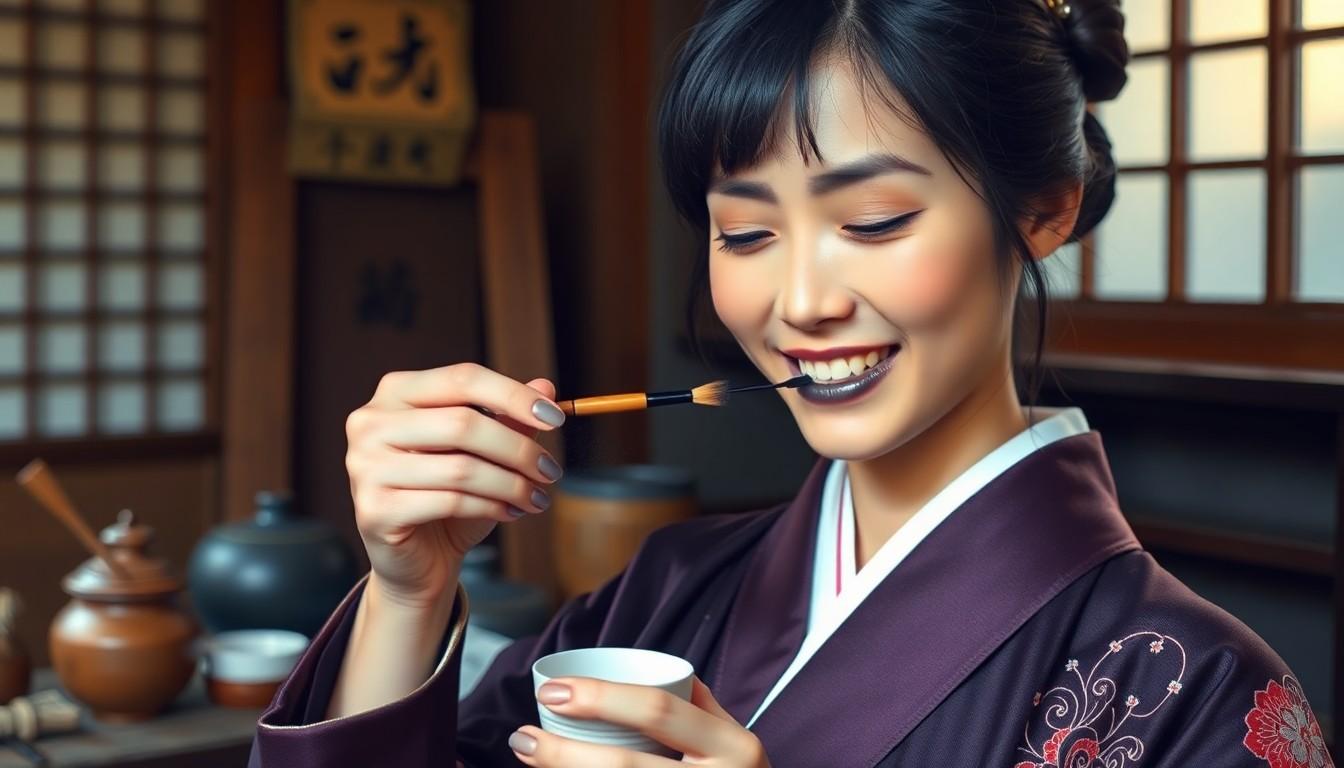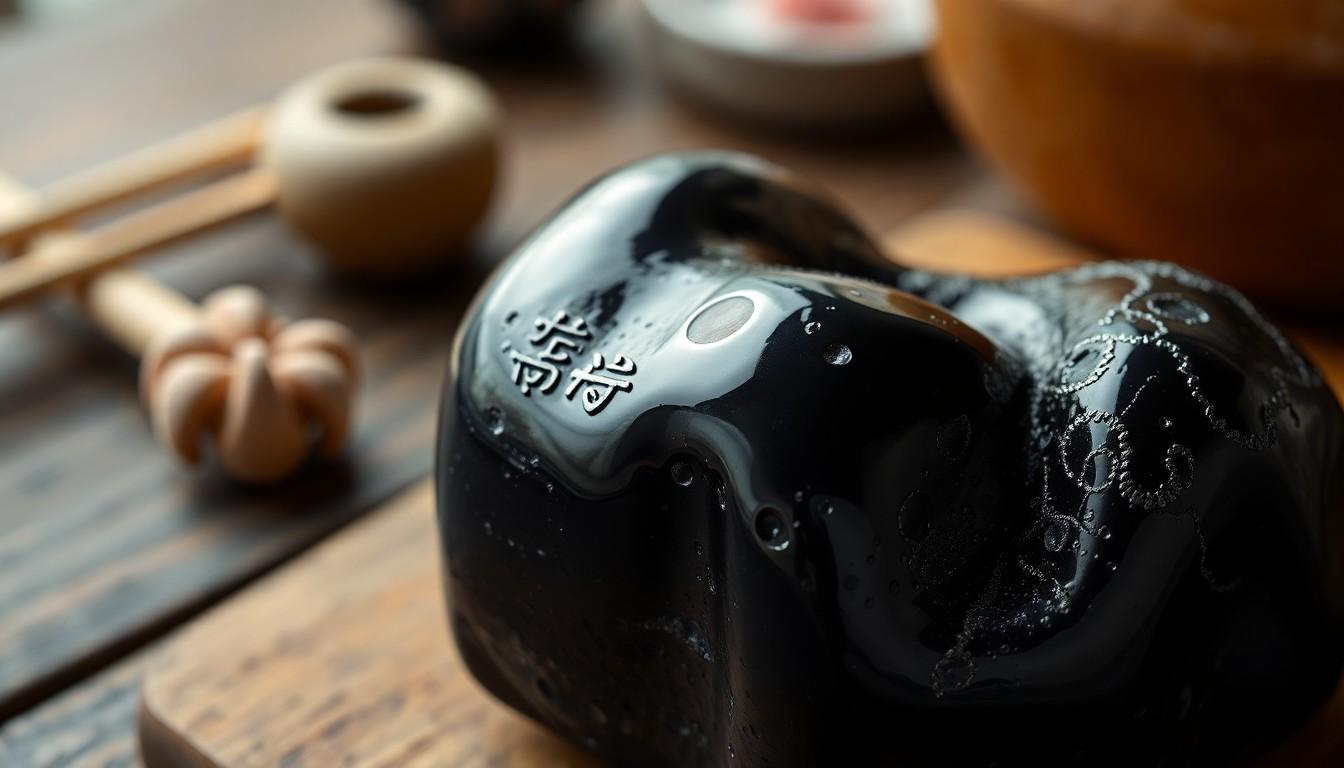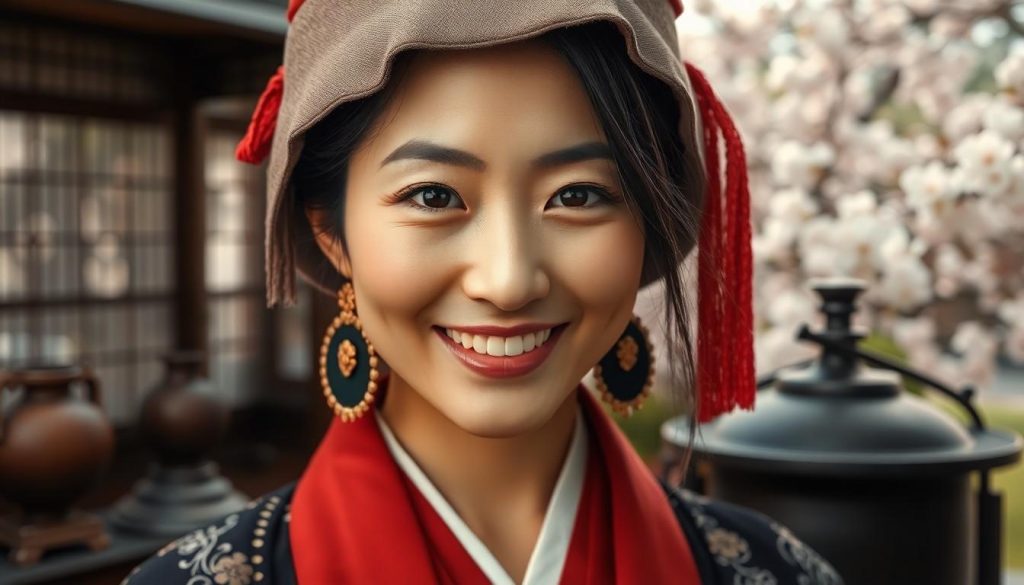In feudal Japan, aristocratic women practiced a unique beauty ritual called ohaguro – the art of blackening their teeth. This striking custom persisted for over a thousand years and transformed perfectly white teeth into gleaming black pearls. While modern beauty standards might find this practice unusual, black teeth were once considered a symbol of beauty, loyalty, and social status in Japanese culture.
The practice of ohaguro wasn’t merely cosmetic. The dark pigment, created from iron filings, vinegar, and other natural ingredients, helped protect teeth from decay and strengthened the enamel. Though the tradition largely disappeared after the Meiji Restoration in 1870, it remains a fascinating glimpse into Japan’s complex beauty standards and cultural practices throughout history.
The Ancient Practice of Ohaguro in Japan
Ohaguro, the traditional Japanese custom of blackening teeth, emerged during the Kofun period (300-538 CE). Archaeological evidence reveals blackened teeth in buried bones and haniwa statues from this era, confirming the practice’s early origins.
The custom earned multiple names throughout Japanese history:
- Kanetsuku (鉄漿) – referring to the iron-based dye
- Tsukegane – indicating the application process
- Hagurome (歯黒め) – literally meaning “tooth blackening.”
- Desshi or Nesshi (涅歯) – traditional terms for the practice
During the Heian period (794-1185 CE), ohaguro gained prominence among Japan’s elite social classes. Literary works like “The Tale of Genji” and “Tsutsumi Chūnagon Monogatari” documented this cultural phenomenon, demonstrating its significance in aristocratic society.
The practice transcended gender boundaries in Japanese culture. Both male and female aristocrats participated in teeth blackening, particularly during the Heian era. Adult nobles adopted this distinctive aesthetic modification as a marker of social status and cultural refinement.
| Time Period | Key Development |
|---|---|
| 300-538 CE | The first evidence in the Kofun period |
| 794-1185 CE | Peak popularity among aristocrats |
| Pre-1870s | Widespread cultural practice |
Cultural and Historical Significance of Black Teeth

Ohaguro, the traditional practice of blackening teeth, originated in Japan during the Kofun period (300-538 AD). This cultural phenomenon evolved from a simple beauty practice into a complex social ritual spanned over millennia.
Status Symbol in Japanese Society
Ohaguro was a prominent status marker in Japanese aristocratic circles, particularly during the Heian period (794-1192 AD). Girls underwent this ritual at age 15 as a coming-of-age ceremony, marking their transition into adulthood. The practice gained additional significance through Buddhist teachings, which viewed white teeth as a reflection of humanity’s animal nature, making blackened teeth a symbol of civilization refinement.
- Marriage Status: Married women displayed blackened teeth to indicate their commitment
- Artistic Expression: Ukiyoe artists depicted blackened teeth in portraits of courtesans’ beauty ideals
- Social Refinement: Elite members of society practiced ohaguro to distinguish themselves from the lower classes
| Period | Cultural Significance |
|---|---|
| Kofun (300-538 AD) | The initial emergence of teeth blackening |
| Heian (794-1192 AD) | Coming of age ritual at age 15 |
| Edo Period | Featured in art and literature |
The Process of Blackening Teeth

The Japanese practice of ohaguro involved a precise application using specific ingredients to achieve the desired black coloration. The procedure required careful preparation and regular maintenance to maintain the teeth’s dark appearance.
Traditional Ingredients Used
The primary blackening solution, called Kanemizu, consisted of:
- Iron filings soaked in vinegar to create ferric acetate
- Dried betel powder mixed with stewed charcoal
- Salt for sanitization purposes
- Rice wine combined with lemon juice for surface preparation
Application Methods
The teeth blackening process followed these sequential steps:
- Sanitizing the mouth with a mixture of betel, charcoal powder, and salt
- Cleaning the teeth’ surface with rice wine and lemon juice solution
- Applying the Kanemizu solution directly to the teeth surfaces
- Repeating applications at regular intervals to maintain the black color
The initial preparation often caused temporary discomfort:
- Swollen gums during the first application
- Sensitivity during the cleaning process
- Multiple sessions to achieve the desired darkness level
- Regular maintenance applications to preserve the coloration
Health Benefits and Drawbacks

Ohaguro demonstrated significant oral health advantages while carrying certain risks. Through its unique formulation, the practice combined cultural significance with practical dental protection.
Dental Protection Properties
The iron acetate-based blackening solution provided multiple dental health benefits:
- Cavity Prevention: Studies confirm reduced caries incidence in individuals with blackened teeth due to the protective coating formed by the dye
- Antimicrobial Effects: Tannins extracted from the Japanese sumac tree created a defensive barrier against harmful oral bacteria
- Pain Management: The solution offered immediate relief for dental sensitivity through its protective coating properties
- Periodontal Health: Research indicates improved gum health among practitioners due to the antimicrobial properties of the ingredients
| Beneficial Component | Health Effect |
|---|---|
| Iron Acetate | Forms protective coating |
| Plant Tannins | Antimicrobial action |
| Bioactive Compounds | Cavity prevention |
- Initial Discomfort: Users experienced temporary gum swelling during the first applications
- Tooth Sensitivity: The acidic nature of the solution caused increased sensitivity in some cases
- Chemical Exposure: Regular application exposed users to metallic compounds
- Maintenance Issues: Incomplete coverage or improper application led to uneven protection
- Absorption Concerns: The continuous presence of iron compounds raised questions about long-term metal absorption
The Decline of Ohaguro Practice
The custom of blackening teeth in Japan experienced a dramatic decline during the late 19th century. This shift marked the end of a centuries-old beauty tradition deeply embedded in Japanese culture.
Western Influence and Modernization
The Meiji period (1868-1911) ushered in significant changes to Japanese society through rapid modernization. Emperor Meiji officially banned ohaguro in 1870 as part of broader reforms to align Japanese customs with Western standards. The practice became increasingly viewed as primitive and outdated, particularly as Japan sought to establish itself as a modern nation on the global stage.
Fundamental changes during this period included:
- Adoption of Western fashion trends
- Integration of European beauty standards
- Elimination of traditional practices deemed “backward.”
- Shift toward natural tooth appearance
| Year | Historical Event |
|---|---|
| 1868 | Start of the Meiji Period |
| 1870 | Official ban on ohaguro |
| 1911 | End of the Meiji Period |
The transformation of beauty standards during this era reflected Japan’s broader societal changes as the nation moved from feudal isolation to international engagement. Modern dental practices replaced traditional tooth-blackening methods, marking the end of ohaguro’s cultural significance in Japanese society.
Summary
The practice of ohaguro is a fascinating testament to Japan’s rich cultural heritage spanning over a millennium. Though the tradition ended with the Meiji Restoration, its impact on Japanese society extended beyond mere aesthetics. This unique beauty ritual combined practical dental benefits with deep social significance, creating a practice that defined status beauty and marital commitment in feudal Japan.
Today, ohaguro reminds us how beauty standards evolve with changing times and cultural influences. While modern Japan has long abandoned blackened teeth, the historical practice offers valuable insights into the intricate relationship between beauty, social customs, and oral health in traditional Japanese society.

